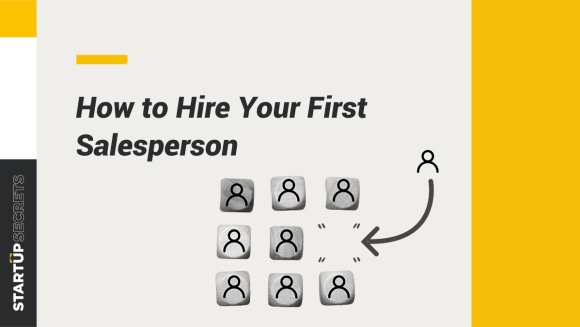Around Boston and beyond, HubSpot is known for its strong entrepreneurial culture. The company has received many awards over the years and was recently named #4 Best Place to Work in 2021 by Glassdoor. Its 128-page Culture Code has been viewed more than 5.7M times on SlideShare alone. But they didn’t always have culture nailed down.
Dharmesh Shah, HubSpot’s Co-Founder and CTO, sat down with Underscore VC Partner Lily Lyman to share how HubSpot first defined and built its culture. He emphasized three key points:
- Start early.
- Treat culture as a product.
- Build with diversity in mind.
By focusing on those three things, you can guide hiring practices, avoid “culture debt,” and build an adaptable, enduring company. Hear the story in the recording below, or read on for key insights.
Designing the Culture Code
Dharmesh and his co-founding CEO, Brian Halligan, felt that culture wasn’t a priority in the earliest days—building and selling the product was too important. Then a peer CEO warned them otherwise:
“There is nothing more important than culture. If you don’t get that, nothing else will matter over the long haul.”
Brian delegated the job to Dharmesh. Today, he regrets waiting as long as they did. Not being intentional about culture from the start is one of Dharmesh’s top three biggest professional mistakes. He advises early-stage founders, “You should be working more on culture than you likely are right now.”
Corralling the Team
Once he started, he quickly noticed some sensitivity around the concept of startup culture. After telling the team about this work, “I got the most negative visceral reaction from the team that I’ve ever seen in my professional career,” Dharmesh says.
He heard all sorts of comments: “Oh, we’re going to be one of those companies now.” Or, “Great, so we’re going to put some mission statements on the wall.” The worst of all: “I don’t know how to tell you this, but I don’t think HubSpot’s the kind of company I thought I joined.”
Why this harsh response? “When people think about culture, they think about this weird thing big companies do to impose platitudes,” says Dharmesh. The team was afraid that talking about HubSpot culture would make it inauthentic. “Once we got over that, it got a lot better, a lot quicker.”
Startup Secret: You can’t impose a culture; it needs to develop authentically.
How to Build Culture as a Product
As any technical leader would, Dharmesh initially thought about culture as an engineering project. “When people see the term Culture Code, they often think code means a code of conduct,” says Dharmesh. “I was thinking code like Python code, but it turns out that’s not possible since humans are unpredictable.”
He now uses a better-fit metaphor—treat your culture as a product. The people that work in the company are your customers. And aspects of culture are product features. “If you think about it that way, a bunch of stuff starts to make sense,” says Dharmesh. He outlined HubSpot’s process.
1. Understand Customer Needs
Dharmesh started with a survey that included some standard NPS questions: On a scale of zero to 10, how likely are you to recommend HubSpot as a place to work? Why?
“You would never build a product without asking customers what it is they’re looking for from that product,” says Dharmesh. “But just like a product, you wouldn’t always do exactly what the customer says. You’re solving for the company’s long-term interest as well as theirs, but you at least listen.”
2. Document Customer Use Cases
Dharmesh then wanted to understand: What are the attributes of people likely to succeed at HubSpot?
He looked at the most successful, best-fit people at HubSpot. What did they all have in common? He noticed qualities like humility and transparency. That’s how the original core values of HubSpot culture emerged.
“Culture guides how you behave when no one is watching,” says Lily. That’s why she thinks about it as: What do you want to celebrate and why?
However, it’s essential that “culture fit” or “common attributes” don’t hinder building teams with diversity of thought and background. “Shared values can show up in many different kinds of people with unique styles and backgrounds,” says Lily. “At Underscore and with portfolio companies, we focus on hiring for attitude instead of ‘culture fit.’” Clearly articulating and defining these qualities can help you avoid bias traps.
3. Ship It
After outlining these cultural qualities, Dharmesh published the first Culture Code internally. It was 16 slides. And while having it as an internal document was useful, “releasing it to the world was immensely helpful,” he says.
Sharing and declaring your company culture externally can be a valuable asset in attracting talent, customers, and capital. It shows the world what you stand for—especially if your values are specific, unique, and debatable.
“It can be a positive selling point for a company and can drive efficiency because it enables people to self-select in or out based on self-assessed culture alignment,” says Lily. “Just like a product launch gives you signal that helps you learn, releasing your culture to the world teaches you something about the types of people you’re attracting to the business.”
4. Collect Feedback
“You would never build a product and not see if customers were happy with it,” says Dharmesh. “You measure it via surveys, usage data, or other tools.”
Over the next few years, HubSpot grew: more people, more processes, different needs. And while the original Culture Code told them the “who” of HubSpot, it didn’t outline other nuances, such as how to make decisions or tradeoffs.
It was time for an update. Dharmesh asked: How could we write an operating system on which HubSpot could run? This next version would become the 128-page HubSpot Culture Code we know today.
5. Iterate (Because No Product is Ever Done)
“You would never build a product and say, ‘Oh, I’m done with that product now,’” says Dharmesh. “Just like a product, culture needs to iterate to fit whatever the use cases are at a particular point in the company’s evolution.”
Consider the return to work decision—should your team work remotely, in a hybrid model, or in person? If you sent out a survey, you’d likely find that flexibility has become one of the top perks (features) people look for. How would you build that into your company (product)?
“The idea is not to protect and preserve the culture,” says Dharmesh. “The idea is to optimize the culture as you go, so it continues to serve as a well-functioning operating system.”
To check if your culture doc is working for the company, Lily shared a few guiding questions:
- Does it make hiring decisions easier?
- Does it make performance evaluation clearer?
- Does it enable consistency around who gets recognized and rewarded?
- Does it simplify decision-making because there is trust and alignment on what is the “right” decision?
Culture as a Hiring Tool
Once you have culture documented, it becomes a screening tool for startup hiring. You can share it with candidates and say: “This is who we are. If this feels like a place you would enjoy, you should take a look. If it doesn’t, no harm, no foul,” says Dharmesh.
This kind of document can help you separate the people who will be happy at the company from those that probably won’t be.
Getting the right people for your company is critical for success. So is diversity.
“I wish we had recognized the importance of diversity earlier,” says Dharmesh. Though many early hires were hired in-network and out of convenience, “we should have made a more deliberate effort.” He cites this as another one of his top career regrets.
It’s much easier to solve for diversity early. “You can have the biggest impact at the earliest stages of team building,” says Lily. “Hiring diverse talent early helps attract future diverse hires because it shows vs. tells that you care about inclusion. Investing additional time and effort upfront can have exponential impact over time.”
Even if you don’t get it right, at least you plant a seed in your team’s head. “Otherwise, if you don’t even talk about it, then everybody just assumes it doesn’t matter,” says Dharmesh. “That’s the signal you send.”
“Building diverse teams can sometimes take longer, which can be hard for startups that are trying to move fast,” says Lily. “How should startups think about the trade-off in time versus really investing in this effort?”
“There’s a spectrum,” says Dharmesh. “Ideally, you do whatever it takes to hire for diversity. The next step down is that you have the processes in place to make it possible to hire.” He noted, for example, that HubSpot uses the Rooney Rule: for every hire above a certain level, a diverse candidate must be considered.
“There may be negative trade-offs in time to hire, but if you don’t get this right at an early stage, there will be negative trade-offs on the other side, too,” adds Dharmesh. “Once you’re at scale, you have to go back and pay off culture debt.”
Avoiding Culture Debt
Continuing on the product analogy, just as a product can have technical debt, a startup culture can have culture debt. With tech debt, you can refactor the piece of code you took shortcuts on and pay off that debt.
“Culture debt is much more insidious,” says Dharmesh. “There’s no code you can rewrite. Sometimes, its roots are deeply planted. You have to have the patience to recognize that it’s going to take decades to get it to where you want it to be.”
HubSpot is working to pay off its culture debt and has made strong commitments to Diversity, Inclusion & Belonging. But any startup can get off on the right foot by 1) starting early, 2) treating culture as a product, and 3) building with diversity in mind.











